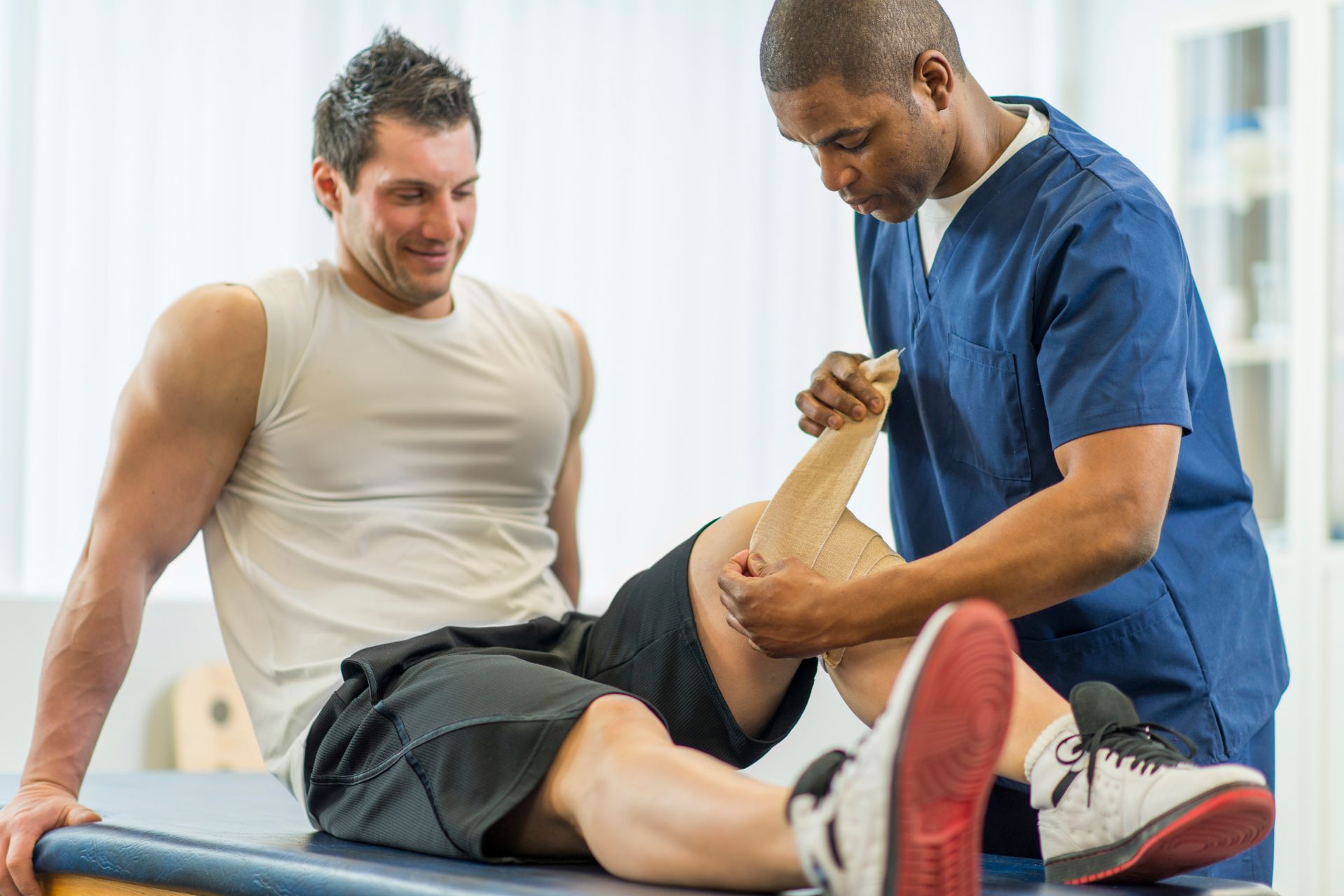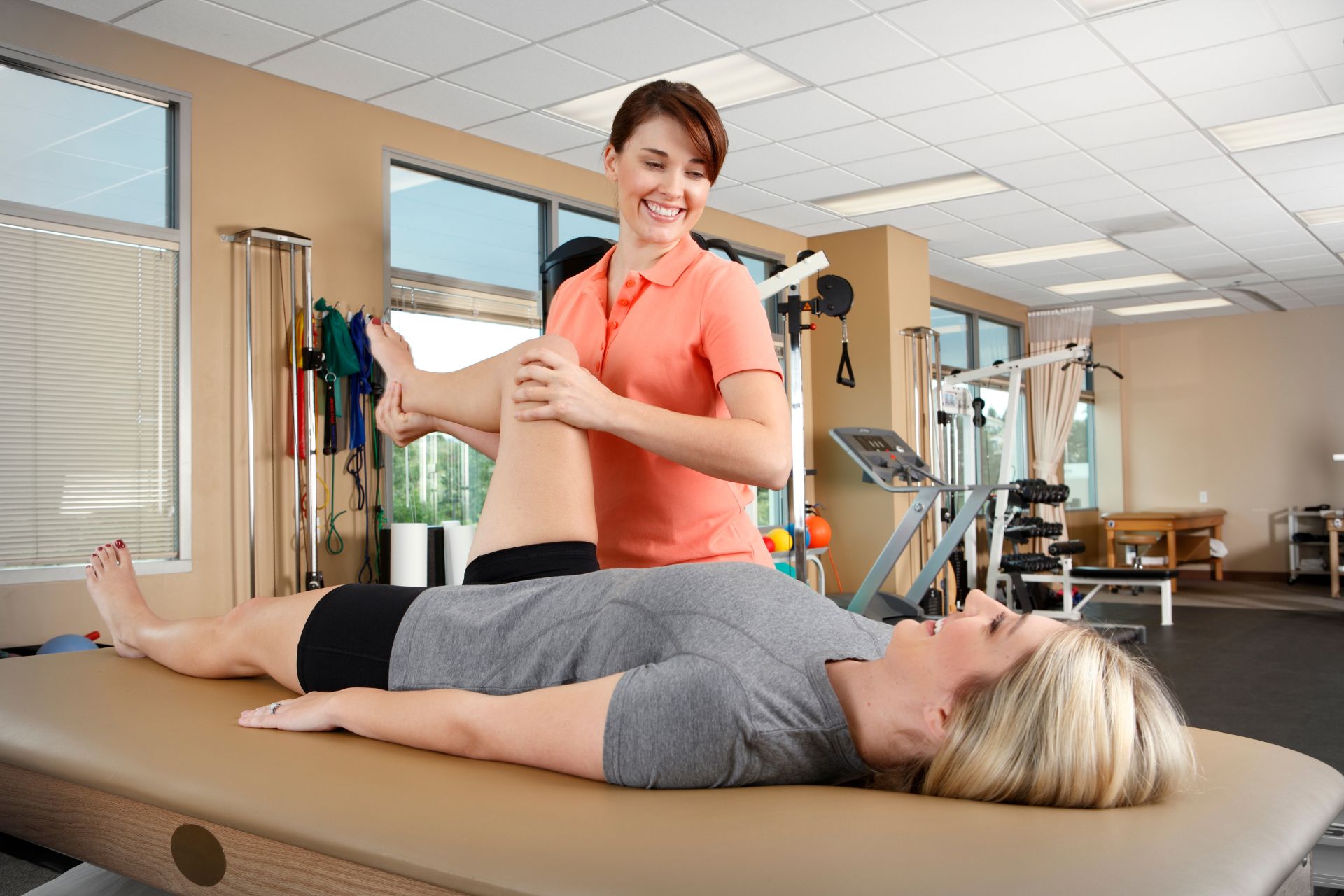Frequently Asked Questions
After knee replacement surgery, physical therapy typically includes a range of exercises designed to improve mobility, strength, and flexibility. These exercises often begin with ankle pumps and heel slides to enhance circulation and prevent blood clots. Quadriceps sets and straight leg raises are crucial for strengthening the quadriceps muscles, which support the knee joint. Hamstring curls and calf raises help in building the posterior chain muscles, aiding in knee stability. Range of motion exercises, such as knee bends and extensions, are essential for restoring joint flexibility. Balance exercises, like standing on one leg or using a balance board, are incorporated to improve proprioception and prevent falls. Additionally, stationary cycling and walking on a treadmill are often recommended to enhance cardiovascular endurance and promote joint lubrication. Each exercise is tailored to the individual's recovery stage and is performed under the guidance of a physical therapist to ensure proper technique and prevent injury.
Physical therapy plays a crucial role in minimizing scar tissue formation after orthopedic surgery by promoting optimal tissue healing and enhancing joint mobility. Through targeted exercises and manual therapy techniques, physical therapists work to improve circulation, which aids in the delivery of essential nutrients and oxygen to the healing tissues, thereby facilitating collagen remodeling and reducing fibrotic adhesions. Techniques such as myofascial release, deep tissue massage, and stretching help to break down excessive scar tissue, preventing it from becoming rigid and limiting range of motion. Additionally, physical therapy encourages the production of healthy, organized collagen fibers through controlled loading and movement, which is essential for restoring functional strength and flexibility. By incorporating modalities like ultrasound and electrical stimulation, physical therapists can further enhance tissue pliability and reduce inflammation, ultimately leading to a more efficient recovery process and improved surgical outcomes.
Physical therapy plays a crucial role in managing pain post-orthopedic surgery by facilitating rehabilitation through targeted exercises, manual therapy, and modalities such as ultrasound and electrical stimulation. It aids in reducing inflammation, improving range of motion, and enhancing muscle strength, which are essential for restoring function and mobility. By employing techniques like joint mobilization and soft tissue manipulation, physical therapists help alleviate stiffness and promote circulation, thereby accelerating the healing process. Additionally, they provide patient education on pain management strategies, including proper body mechanics and ergonomic adjustments, to prevent further injury and ensure long-term recovery. Through individualized treatment plans, physical therapy addresses specific surgical outcomes, such as those from knee arthroplasty, hip replacement, or rotator cuff repair, optimizing postoperative outcomes and minimizing the risk of complications.
Physical therapy should typically begin within 24 to 48 hours after orthopedic surgery to promote optimal recovery. Early initiation of rehabilitation is crucial for enhancing joint mobility, reducing postoperative pain, and preventing complications such as muscle atrophy and joint stiffness. The physical therapist will tailor a personalized rehabilitation program that includes range-of-motion exercises, strengthening routines, and functional training to restore normal movement patterns. This early intervention is essential for improving circulation, minimizing scar tissue formation, and accelerating the healing process. The collaborative effort between the orthopedic surgeon and the physical therapist ensures that the patient adheres to weight-bearing restrictions and progresses safely through the stages of recovery, ultimately leading to improved functional outcomes and a quicker return to daily activities.
Common challenges faced during physical therapy after shoulder surgery include pain management, limited range of motion, muscle weakness, and inflammation. Addressing these issues involves a comprehensive rehabilitation plan that incorporates pain control strategies such as cryotherapy and nonsteroidal anti-inflammatory drugs (NSAIDs). To improve range of motion, therapists employ passive and active-assisted exercises, gradually progressing to active exercises as tolerated. Strengthening exercises target the rotator cuff and scapular stabilizers to rebuild muscle strength and endurance. Swelling is managed through techniques like manual lymphatic drainage and compression therapy. Patient education on proper posture and ergonomics is crucial to prevent compensatory movements and ensure optimal recovery. Regular assessments and adjustments to the therapy regimen are essential to accommodate individual progress and address any complications such as adhesive capsulitis or tendonitis.

